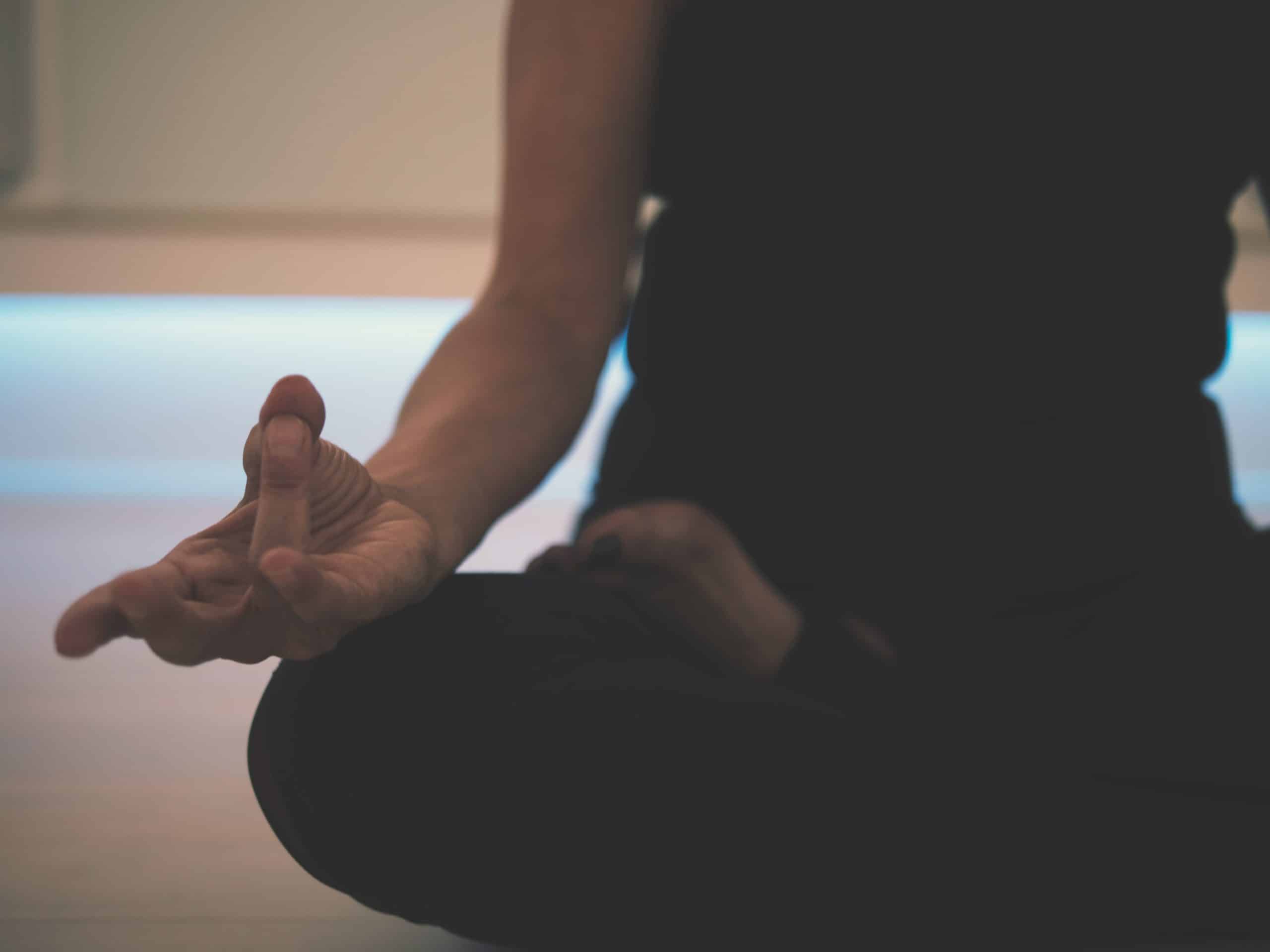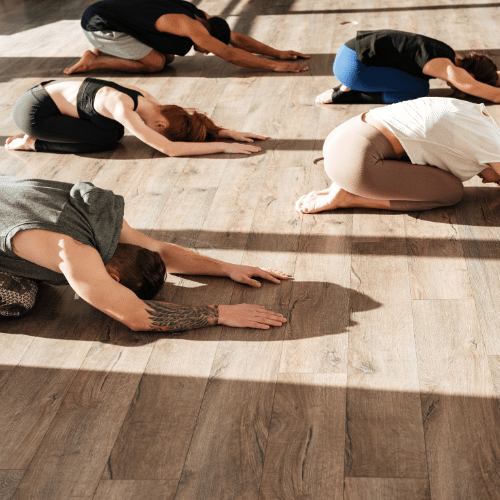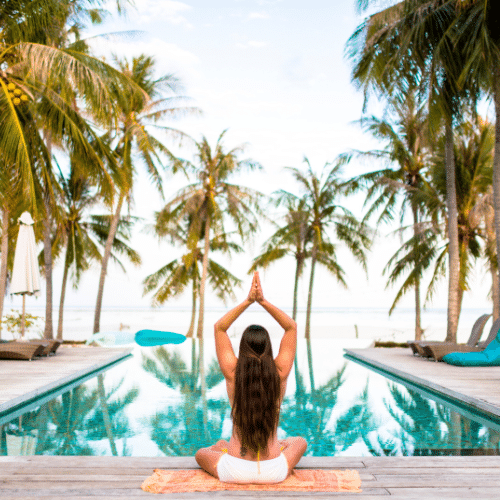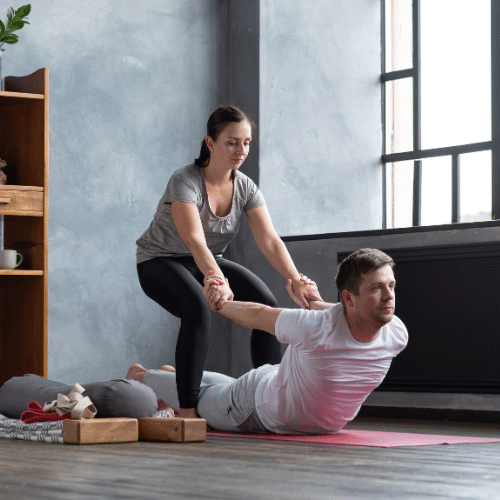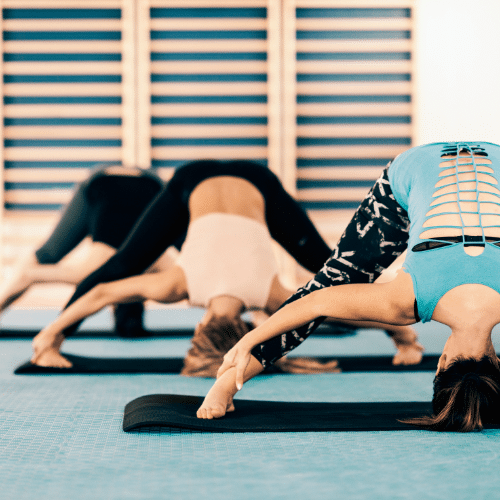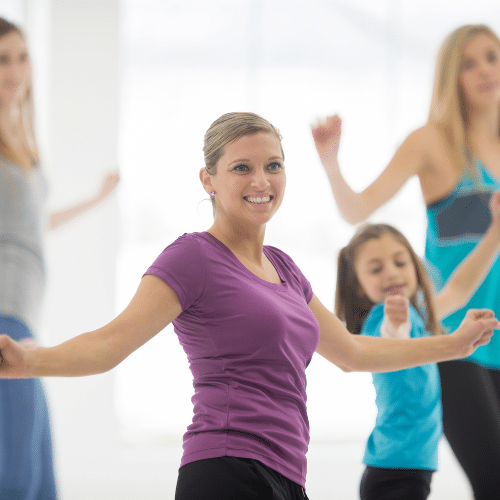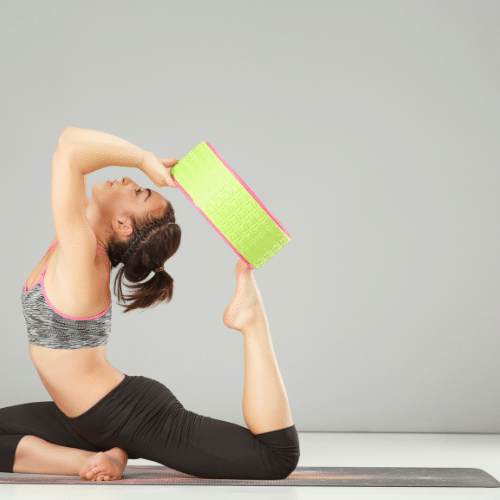Relaxation isn’t a luxury; it’s a must. For anyone looking to be their best selves, taking time to ease tension after a long day is a necessary component of self-care. There are many ways to relax, and one of the healthiest ways is practicing yoga.
Yoga not only improves mobility and flexibility; it’s a life-changing activity for anyone looking to build isometric strength, improve breathing, and — most importantly — promote relaxation!
Of course, it takes more than whipping out a yoga mat to experience yoga’s calming benefits. It takes breathing and the right poses.
These five need to know poses will have any practitioner making their way to inner peace and relaxation!
1. Child’s Pose (Balasana)
Sometimes, all it takes to unwind after a long day’s work is to breathe. Take the calming benefits of mindful breathing to the next level with the Balasana or Child’s Pose.
Begin by kneeling on the floor with both feet touching each other. Sit comfortably on the calves and place the hands atop the thighs. From here, inhale deeply, hold for a second, and exhale.
For added comfort, students or practitioners assuming the Child’s Pose can kneel on their yoga mats or carpets.
The benefits of the Balasana pose come from its simplicity and how it enables novices to breathe freely. The Child’s Pose leaves the abdomen exposed, allowing abdominal expansion.
The other benefit of the Child’s Pose comes from the pause. As the student inhales, the belly fills with air. The pause before exhalation stimulates the vagus nerve and lowers the pulse and respiratory rate.
Reducing the heart rate lowers the sympathetic response or the body’s fight-or-flight mode. As a result, the practitioner eases into calmness.
2. Lying or Corpse Pose (Savasana)
Sitting on one’s knees isn’t the most comfortable position for some people. The Savasana or Corpse Pose is the perfect alternative.
The Savasana is one of the simplest need-to-know poses in yoga. Despite its simplicity, it’s also one of the most calming.
To perform the Corpse Pose, lie flat on the floor with the arms on the sides. The palms can either face upward or down, depending on preference.
Students or practitioners must close their eyes and inhale deeply through the nose. At the top of the inhalation, practitioners must pause and exhale slowly through the mouth. For the best results, practitioners must stay in this position for at least 10 minutes.
The benefits of the Savasana pose are similar to those of the Balasana. The only difference is that the Corpse Pose is more accessible to the beginner yoga practitioner with tense quadriceps and hips.
3. Viparita Karani Pose
The Viparita Karani pose may not seem like the textbook yoga pose, but it’s one that students need to know to move on to the Ananda Balasana pose.
The Viparita Karani pose is simple. All a person needs to do is lie flat on the floor with the legs elevated on the wall. The elevation of the legs needs to be at least 45 degrees. For the most benefits, a practitioner must elevate the legs at a 90-degree angle.
While in Viparita Karani, the student must breathe mindfully, inhaling through the nose and exhaling through the mouth. Students must hold the pose for at least ten minutes.
The Viparita Karani pose reduces anxiety and eases muscle tension. The added benefit of this pose is that it stretches the hamstrings using the passive resistance provided by the wall.
4. Happy Baby Pose (Ananda Balasana)
The Happy Baby Pose combines the benefits of the Savasana and Viparita Karani poses. It’s actually the progression of the Viparita Karani.
To perform the Happy Baby Pose, practitioners must lie on the floor. After lying on the floor, practitioners must raise their legs and grab their feet by the soles. They must grip their soles while keeping their backs and shoulders in contact with the floor.
Practitioners must then inhale deeply through the nose and exhale through the mouth. As with the other poses on this list, a pause between inhalation and exhalation is necessary.
Besides eliciting a calming effect, the Ananda Balasana pose stretches the glutes and the hamstrings. Also, the elevated position of the feet allows blood to flow to the torso and brain, promoting circulation.
Many practitioners who try the Happy Baby Pose report drops in their heart rate and stress levels. Some also claim that the position does a marvelous job stretching the groin.
5. Easy Pose (Sukhasana)
We cap off this list with a pose everyone associates with meditation — the Sukhasana pose.
To perform the Sukhasana, sit on the floor with both legs crossed. After assuming this position, lay the hands on the knees to relax the shoulders.
From here, inhale deeply through the nose. Pause for one to four seconds and exhale slowly through the mouth. Breathe this way while in the Sukhasana position for at least ten minutes. Focus on the breaths to get the meditative benefits of the pose.
The Sukhasana is one of the most meditative and relaxing poses in yoga. When done correctly, it also promotes and maintains hip mobility and flexibility.
Of course, not everyone can sit with crossed legs. To address this, practitioners can sit on a pillow to reduce the stretch on the groin. If this doesn’t help, practitioners can perform the Child’s Pose instead.
Relax, Rejuvenate, and Recover in Stillness
The yoga poses we’ve listed are some of the most relaxing and accessible. Practice these poses to experience rejuvenation that prepares you for bed and the next day.
Of course, there’s more to yoga than its relaxing and meditative poses. The environment where you practice yoga is just as important as the art itself. If you’re looking for a calm, positive, and supportive environment in Sacramento, check us out at Zuda Yoga.
Sign up for 30 days and be the calmest and healthiest person in your office or neighborhood!


